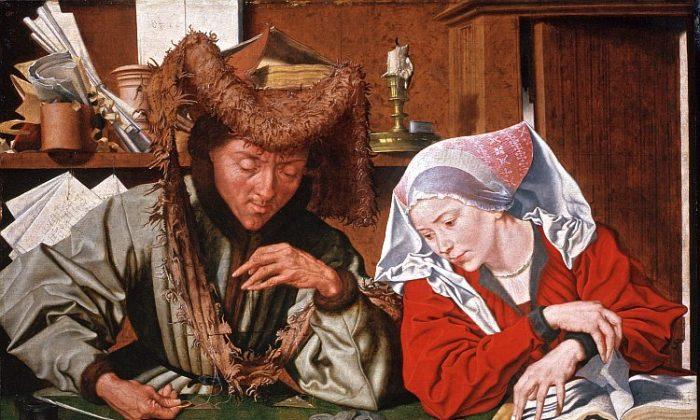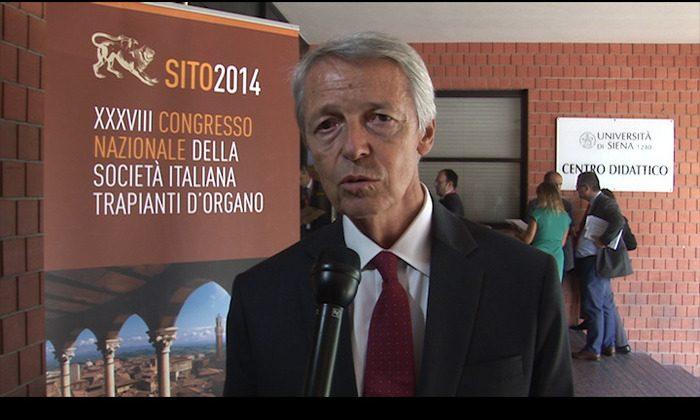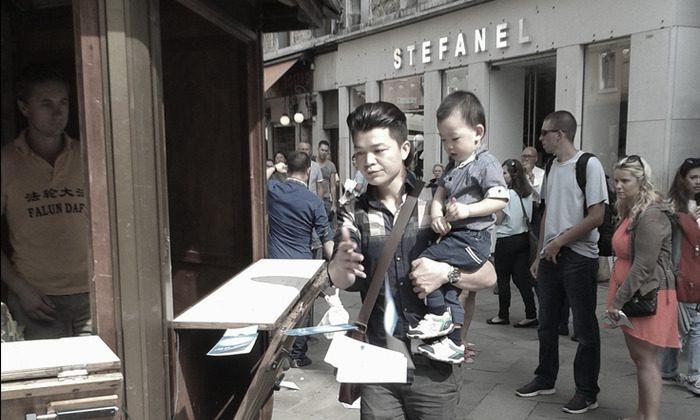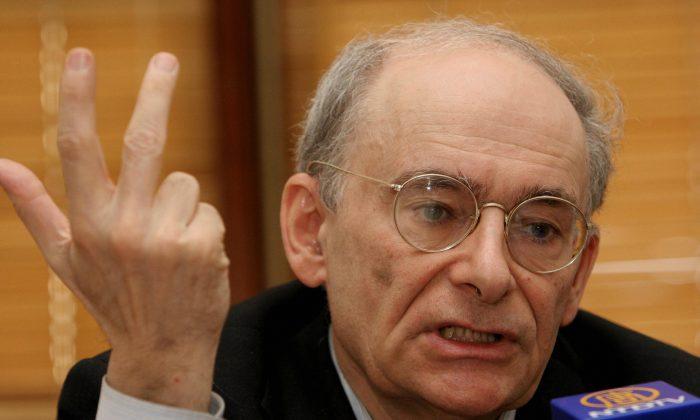FLORENCE, Italy—“It is a good thing to earn money, but even better is knowing how to spend it,” Giovanni Rucellai said in 1475.
As a merchant who became a patron, he entered the city’s history, along with some Florentine families—not for the enormous wealth he had accumulated, but for spending his money on the arts and culture of the Renaissance.
The art exhibit Money and Beauty—subtitled Bankers, Botticelli, and the Bonfire of the Vanities—in Florence’s Palazzo Strozzi, is in its last weeks. The exhibit tells the story of the global banking system and how the money overwhelmed the society of the time, for better or worse.
Money and Beauty are “two elements that seem antithetical and incompatible, but that, ultimately, through the commission, can be reconciled,” said Ludovica Sebregondi, art historian and curator of the exhibition.
Works were meticulously chosen by Sebregondi and arranged by architect Luigi Cupellini: coffers, bills of exchange, first-account records, and golden florins, the 24-carat pure-gold coins weighing 3.53 grams and produced by the Mint of Florence in 1252, from where everything began.
Protestant Flanders
Paintings by Flemish masters depicting the deeds of usurers are centrally positioned in the exhibit. Usurers were an entirely new figure in the European social structure at that time. In the paintings, their faces and bodies are visibly warped by their obsession with money.
In Van Reymerswaele’s “The Usurers,” what stands out are “the piercing hands, strong shadows, [their] watching their money in the middle, with the candle half-consumed, a symbol of vanitas, and in their faces the personification of that saying ’the money is the devil’s excrement,'” Sebregondi said, interpreting the body language used by the Dutch painter.
The theme of usury is also depicted in his painting “The Banker and His Wife.” The moneychanger and his wife are more beautiful than the two in “The Usurers,” but “with their predatory gestures, they communicate the true nature of those who traffic with money,” Sebregondi said.
Catholic Italy
While the northern artists, according to their Protestant thinking, basically condemned usury morally, the Catholic Church banned it immediately. “The Church banned usury because the Bible enjoined us to make our living by the sweat of our brow; work was part of God’s plan for us and usury wasn’t work,” Parks writes in a publication associated with the exhibition.
Initially in Italy, the idea of money was strongly linked to the idea of sin due to Dante’s “Divine Comedy,” where monsters devour men, and devils use a bag of money to whip the bodies of the sinners. Among the sinners are a pope, a cardinal, and a nun, testifying to the corruption that the Church suffered with the introduction of money.
Then St. Thomas Aquinas, a Dominican monk, introduced the idea of expiating sins through donations and “distinguish[ing] the usurer from the banker,” Sebregondi said. He made loans acceptable by defining a percentage (about 5 percent) below which lending was not regarded usury.
Many were the donations “for the common good” by rich merchants and bankers, such as Francesco Datini, who had two hospitals built with 100,000 golden florins. One was called the “Hospital of the Innocents.”
Unique is the case of “Lelmo Balducci, a Florentine banker, suspected of being a usurer, who left all his money to build the Hospital of St. Matthew (now the Fine Arts Academy). He founded this hospital to treat skin diseases because it was believed that touching money would lead to skin diseases,” Sebregondi said, illustrating the strong association between money and dirt at that time.
Continued: Patronage in Florence ...
Patronage in Florence
Between the 14th and 16th centuries, the number of artworks commissioned by the Florentine bankers increased significantly.
“They spent enormous sums, ... founded churches and convents, built palaces, ordered statues and paintings. At death of Lorenzo the Magnificent in 1492, the Medici had spent three times the entire heritage of their grandfather Cosimo to build architecture, commission paintings and sculptures, donated to their fellow citizens,” renowned Italian archaeologist and art historian Salvatore Settis writes in his report to the exhibit.
Besides financing beauty for penitential purposes or commissioning a “splendid work of art that spoke about you, about your power, about your importance,” there were, however, other factors at work, Sebregondi said.
“There was a very strong love for art, by everybody. There was the pride of the city, the importance of making the city more beautiful,” she said. Beauty was a collective desire, not just the striving of a few rich people.
The noble palaces of the time significantly changed the architectural profile of the entire city. The story about the laying of the foundation stone for the Palazzo Strozzi, which not only hosts the exhibition, but is also part of it, tells how Filippo Strozzi was happy that a grocer threw a coin to the stone. This characterizes the relationship between the nobleman and the common man as one of equality.
“Florence isn’t Versailles. Here there is the formal rigor, absolute beauty, cleanliness, neatness, not the royal pomp,” Sebregondi said. “We shouldn’t imagine the shops as a court. Florence was not a court, Florence was a republic, or better, a municipality that becomes a republic.”
Even the Medici, the lords of the city, with their great political influence, “never wanted to stand out too much, and they expressed a spirit of simplicity and moderation,” she said. Many of the works ordered were “private commissions, almost all for the bedrooms.”
To the Glory of God
“I’m always thinking and planning, and if God gives me the opportunity I hope to create great works for the future,” Filippo Strozzi said in 1466, upon returning to his home city after a long exile in Naples.
“If there is no inspiration—at least a belief—one doesn’t do things like that. If everything is extremely rational, it’s impossible to get masterpieces such as those by Fra Angelico,” Sebregondi said. Some painters weren’t paid for their work. Instead, compensation products were given to the monastery they worked for.
A strong faith, then, that guided the Florentine art to strive for a higher beauty? Lorenzo de' Medici can be imagined as a very cold man, the man fighting against Dominican friar Savonarola, but many times a week he went to a convent and during the night he scourged himself, as Sebregondi found in his memoirs.
“We cannot judge all of the past with the thought of today,” Sebregondi said about the factors that produced one of the finest eras of history. “We have lost the ability to identify ourselves in a religious thought that was much deeper than what it is today.”
The exhibit Money and Beauty at the Filippo Strozzi Palace in Florence closes on Jan. 22.











